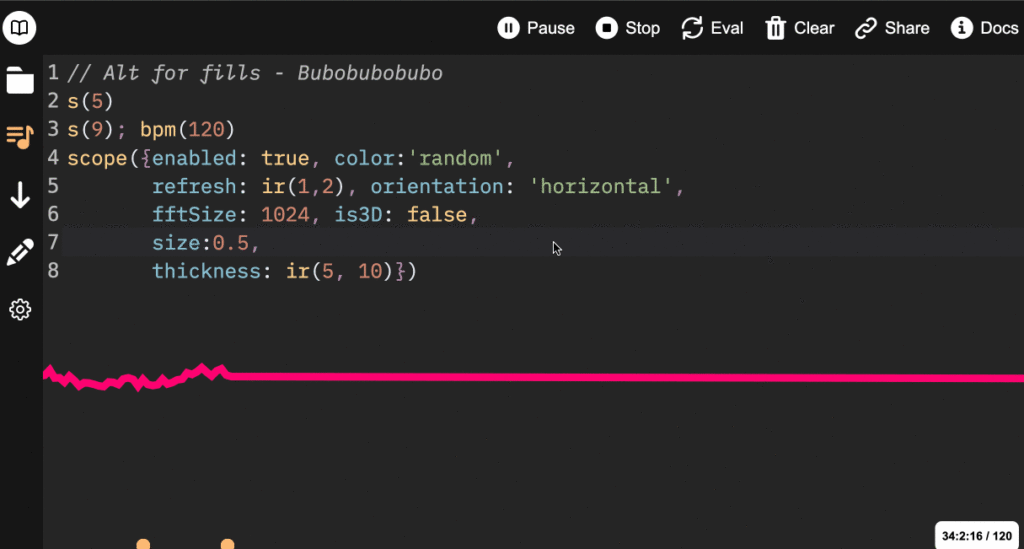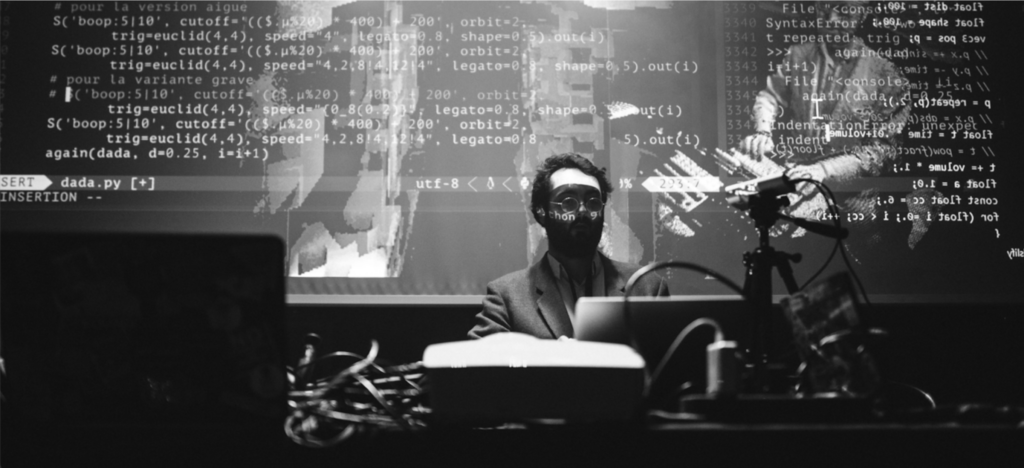Hydra (Marta & Fatema)
For our visual side, we have decided to begin with vibrant visuals characterized by dynamic, distorted light trails. Our initial code included loading the image, modulating it with a simple oscillator, and then blending it with the original image, resulting in a blur effect. As we progressed, we integrated more complex functions based on various modulations.
As our project evolved, our goal was to synchronize our visuals more seamlessly with the music, increasing in intensity as the musical layers deepened. We incorporated a series of ‘mult(shape)’ functions to help us calm down the visuals during slower beats.
Finally, we placed all the visuals in an array and used CCV to update them upon the addition of each new layer of music. This enabled us to synchronize the transitions between the music and visuals. Additionally, we integrated CCs into the primary visual functions to enhance the piece with a more audio-reactive experience.
created an array of visuals that enabled swift transitions, all perfectly timed with sound triggers for perfect synchronization. Additionally, we integrated CC’s into the main visual functions to enhance the piece with a more audio-reactive experience.
Check out the final code for visuals.
Tidalcycles (Bato & Jeongin)
For our final composition, our group created a smooth blend of UK Garage and House music, set at a tempo of 128 BPM. The track begins with a mellow melody that progresses up and down in the E-flat minor scale. On top of this melody, we layered a groovy UK Garage loop, establishing the mood and setting the tone of the composition.
To gradually introduce rhythm to our composition, Jeong-In layered various drum patterns, adding hi-hats, claps, and bass drums one by one. On top of Jeong-In’s drums, we introduce another layer of classic UK Garage drum loop, which completes the rhythmic structure of the composition.
Furthermore, we incorporated a crisp bass sound, which gave the overall composition a euphoric vibe. After introducing this element, we abruptly cut off the drums to create a dramatic transition. At this point, we added a new melodic layer, changing the atmosphere and breaking up the repetitiveness of the track. Over this new layer, we reintroduced the previously used elements but in a different order and context, giving the composition a fresh perspective.
Additionally, we used a riser to smoothly transition into our drum loop and also incorporated a sea wave sound effect to make the sound more dynamic. We end the composition with a different variation of our base melody, utilizing the jux rev function.
Check out the final code for music.

